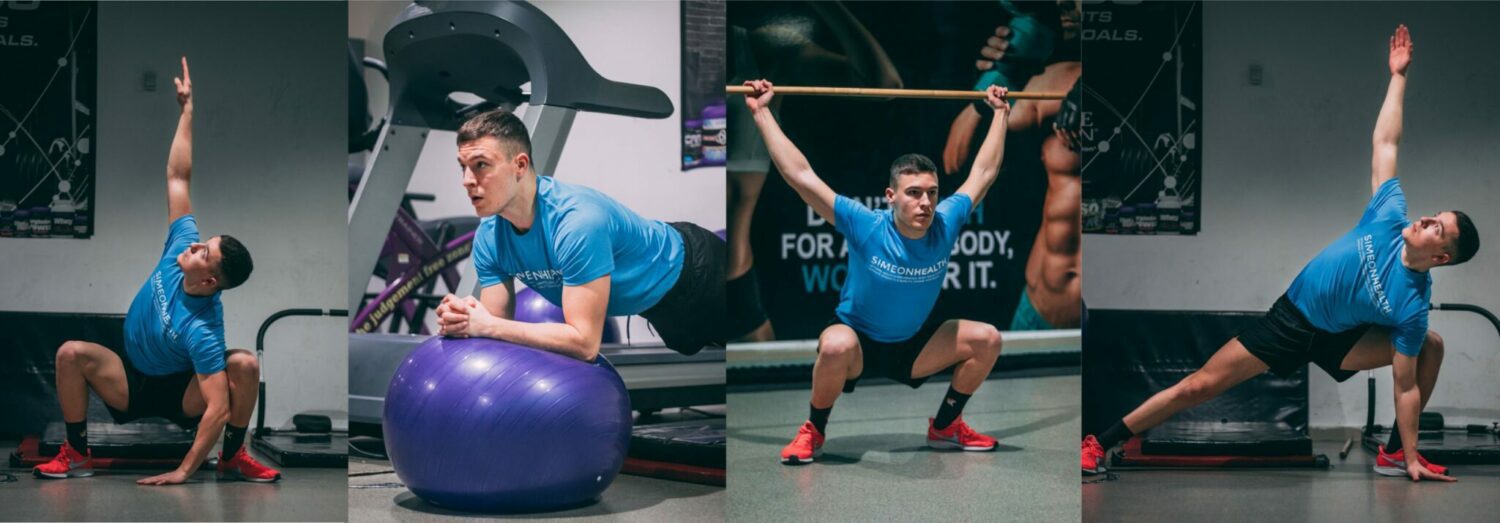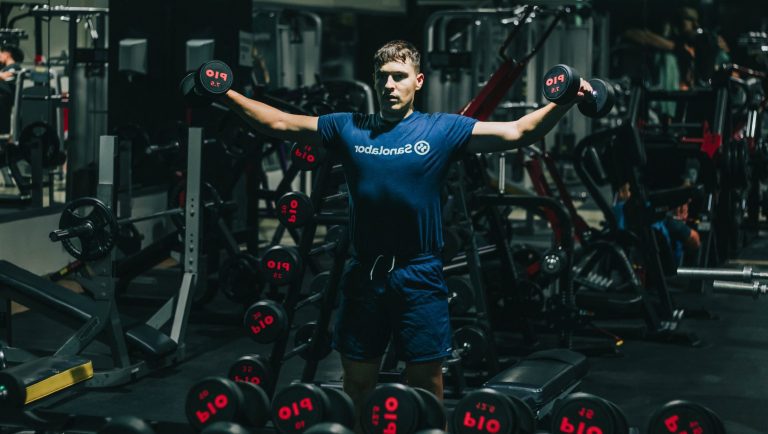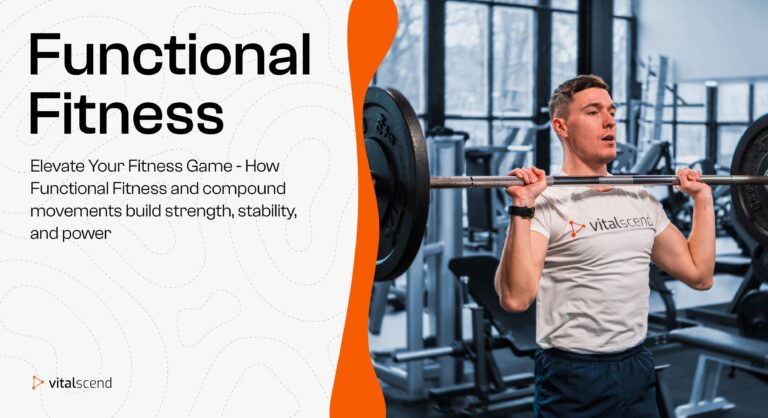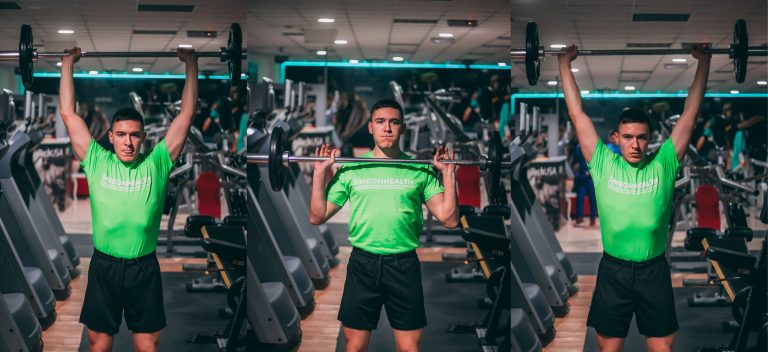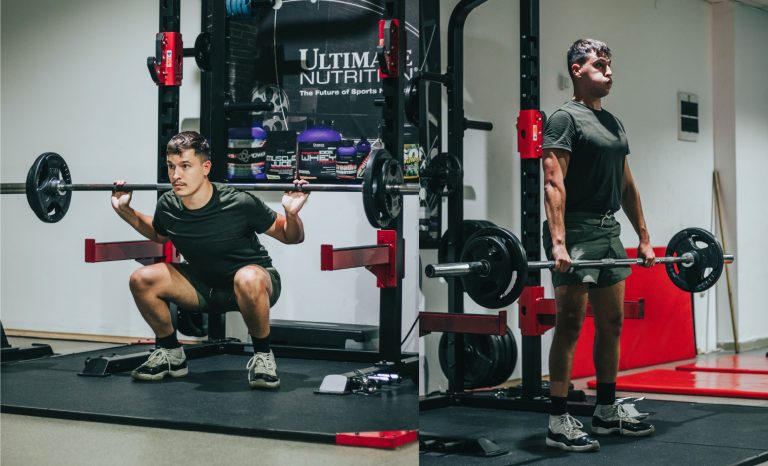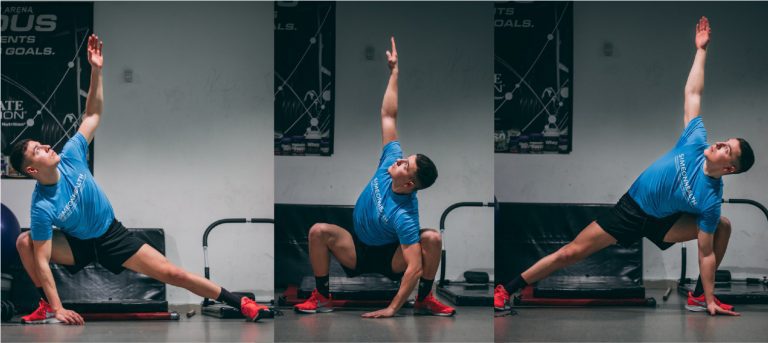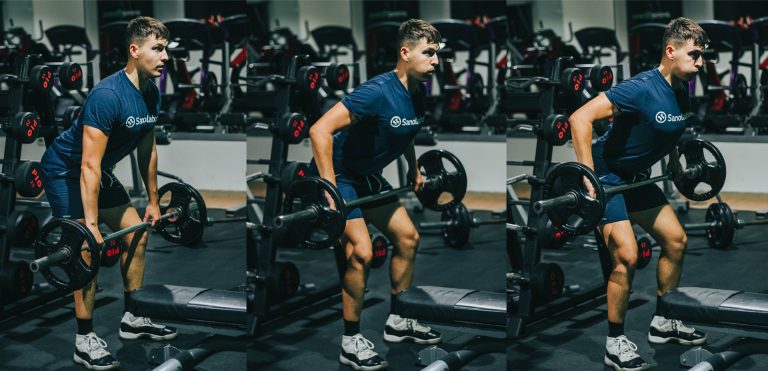7 Primal Movement Patterns and Exercises
Functional Movement Patterns
Every functional workout should incorporate multi-joint or compound movements also known as primal movement patterns. These are frequently-used moves in everyday life and can improve your posture and form.
By building the needed muscular strength, improving joint mobility, and increasing specific muscle flexibility, we can learn to improve our muscle activation and posture, so we can live longer and healthier lives.
7 Primal Movement Patterns & Exercises
Hinge
Hinge is one of the most common movements that occur in our day. Anytime you stand up, lift something off the ground or tie your shoes you are bending forward, that’s a hinge.
Anatomically, the hinge occurs in the hip joints, while your torso and the upper body go forward and down. Three most important things to consider before doing this movement:
- Neutral spine position
- Activation of the hamstring and gluteus muscle
- Feet are shoulder distance apart, knees are slightly bent
Before attempting to add weights to this, you should try putting a wooden stick behind you, while doing the movement and make sure that three points of your vertebrae are touching the stick, on your way down which means the neutral spine curve is correct.
These three points are: the head, thoracic spine (mid-back) and bum should touch the stick.
The top hinge exercises incorporated in functional fitness are barbell deadlifts, good mornings, kettlebell swings, and pull-throughs.
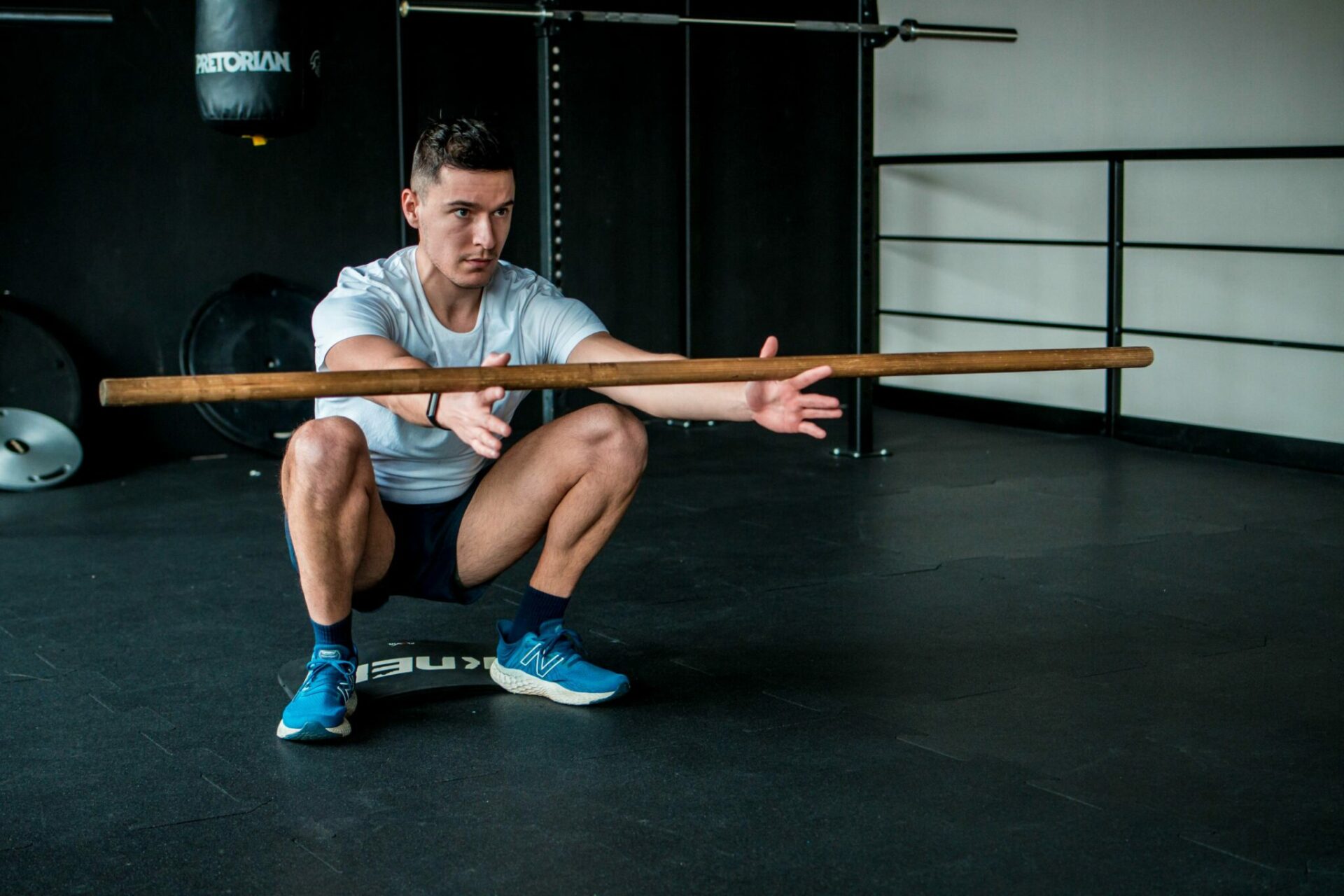
Squat
One of the most important and foundational exercises to do is the squat. The squat is the ultimate, no. 1 exercise for the whole body. No other exercise activates as many muscles at the same time.
When squatting, we activate almost all muscles of our legs, especially the quadriceps, gluteus, hamstrings, tibialis anterior, calves, core, upper, and lower back muscles. Squat tells us a lot about muscular balance and strength in the lower body. Most of the shortened (tight) muscles, unused and weak ones can be spotted easily in a squat.
If your knees go inward or outward, if your spine goes in increased lordosis, if you can squat deep, it all says a lot about your key muscle flexibility, strength, and joint mobility. Before adding any weight to your barbell, first want to master a no-weight squat.
For the optimal squat, we want:
- Neutral spine position
- Feet slightly wider than hips-width
- Knees pointed in the direction of the toes
- Weight is distributed throughout the whole foot
- Activated core, Intraabdominal pressure
- Heels stay on the floor
Once you have improved your squat form, whether through exercising hip mobility, stretching your calves, or increasing your quad strength you can look up into these exercises – goblet squat, dumbbell front squat, barbell squat, front squat, barbell overhead squat, wall squats, pistol squats, pile squat, frog squats and many other.
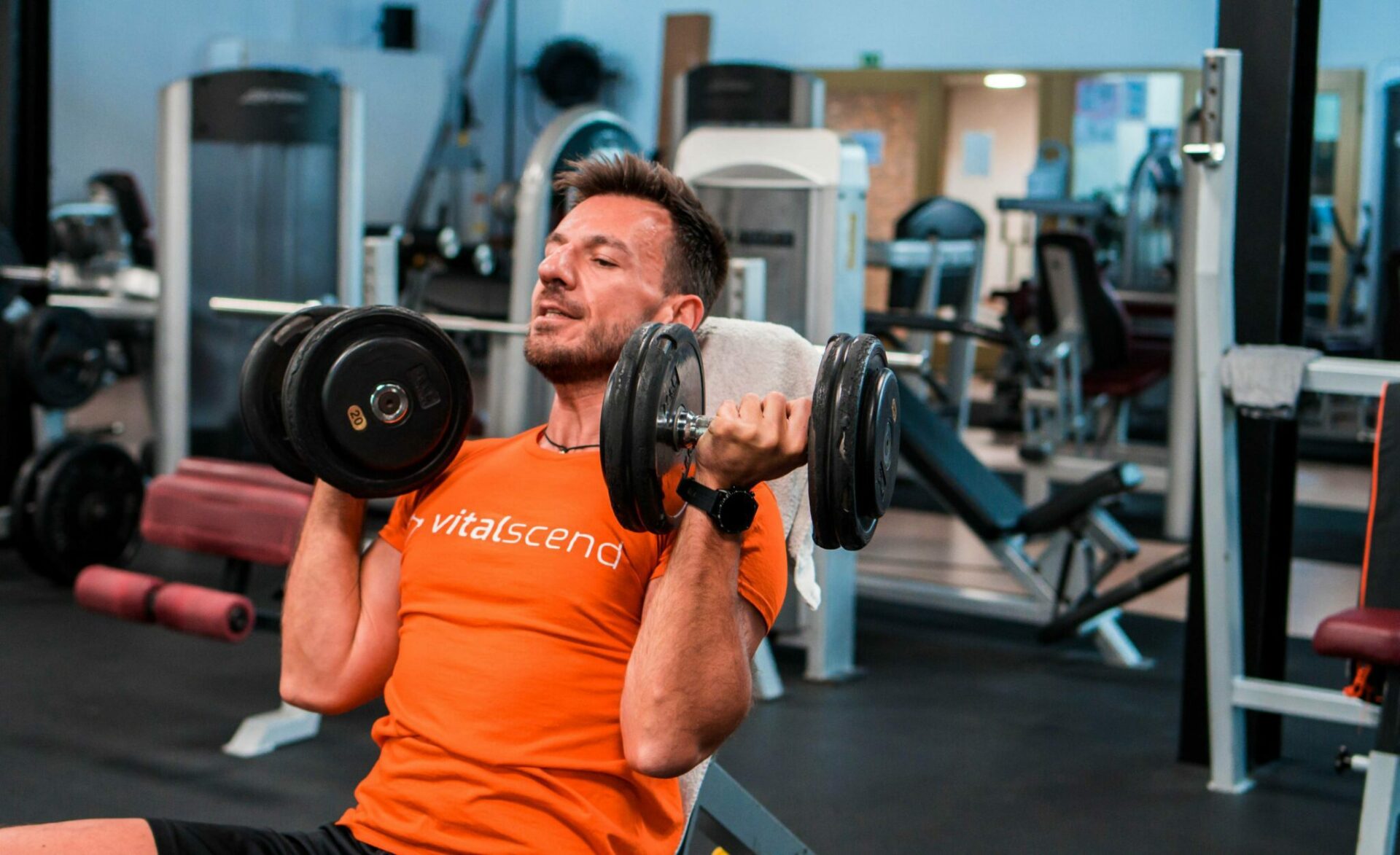
Push
Push and pull are the two most common and most important upper body exercises, that work the back and chest muscles, along with traps, shoulders, and triceps.
Push motion is a complex compound movement involving force transmission through the wrists, elbows, and shoulders. This usually requires quite good shoulder mobility and stability. Make sure to warm up your wrists before pushing any weight.
Pushing motion can occur:
- Horizontally (frontal) – think bench press, or when you push yourself back from the desk
- Vertically (upward) – or overhead press, think lifting a box overhead
- Vertically (downward) – push downwards – like dips or getting out of your chair
The correct form of pushing motion depends a lot on the type of push motion we do, but also how heavy the object (exercise) is. Since there are so many different exercises, it’s hard to cover all in a couple of simple steps but the most important rules for push motion would be:
- Neutral Spine
- Active Back muscles (scapula retractors)
- Active shoulder Stabilization
- Specific Muscle activation (push with chest, shoulder, and triceps not with switching your scapula position)
- Active Core stabilization
- Intraabdominal pressure
- Symmetrical lifting (hands-on same height)
- Strong grip on the barbell (dumbbell)
Anytime we push, we should strive for an optimal line of gravitational force – a straight line from shoulders, elbows, and wrists in an extended position. Most people would profit from working on their grip, shoulder mobility, stability, and core stability before attempting to lift weights overhead.
An example of push motion exercises would be the dumbbell bench press, barbell bench press, elevated push-up, decline push-up, overhead military press, dips, incline press, and push-downs.
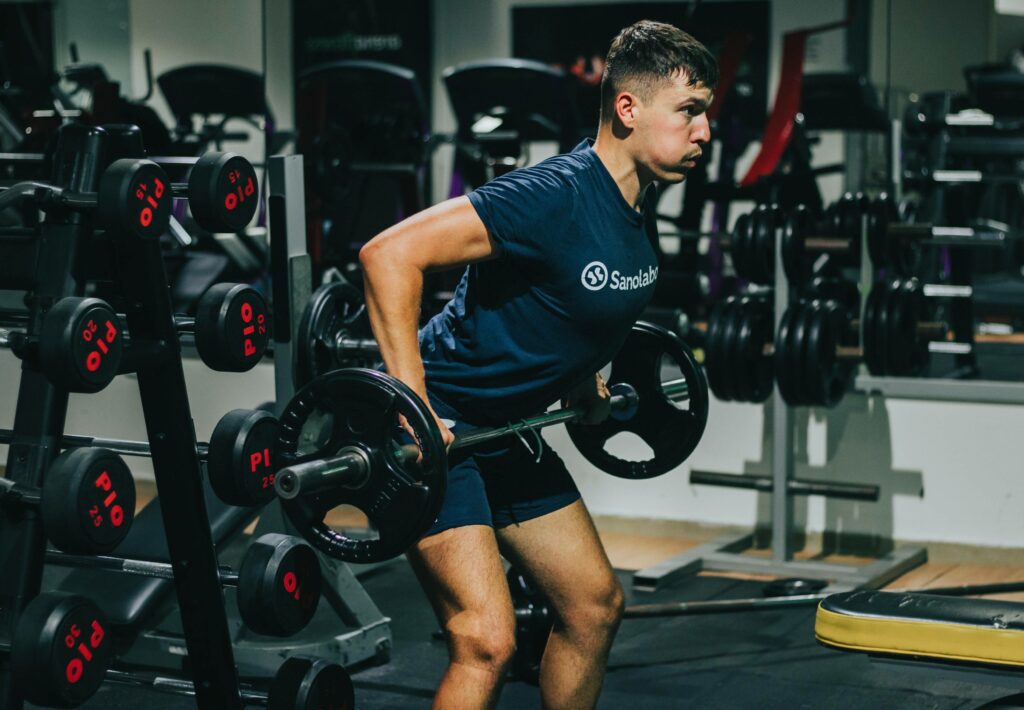
Pull
Another very complex upper body movement that mainly involves the back muscles is the pull motion. Pull motion exercises can be highly manipulated, made both unilateral and bilateral, a combination of hinge and pull, standing or sitting pull (horizontal on the machine), and lying on a bench (on your stomach).
An important reason to train your back muscles by pulling is to improve your posture. Pulling exercises can improve your subconscious muscle activation, retracting scapulas to keep your back straight but also can strengthen these muscles which hold you erect.
Most pull motion exercises are compound since they involve your back, shoulders, elbows, and wrists. Pulling motion is the opposite of pushing, so if you work with weights, you would want the opposite gravitational force.
We can pull both vertically and horizontally. Most pull exercises are best done on machines, but for experienced trained people the pull-up is a great exercise.
The optimal form while pulling would be:
- Neutral Spine
- Head in continuum with the spine
- Intraabdominal pressure (especially with barbell weights)
- Activation of scapular retractors
- Pulling only with back muscles rather than compensating with changing your position (hip pulling)
- Slower eccentric (controlled) motion
An example of pulling exercises would be pull-ups, barbell row, chest-supported dumbbell row, seated wide grip pull, bent-over dumbbell rows, barbell deadlift, dumbbell single-arm row, and inverted row.
Gait
One of the most important bilateral symmetrical balancing exercises is the farmer’s walk.
Humans walk, a lot. Many times we carry a bag on our shoulders, talk on the phone, and hold the groceries in one hand. This requires stability, balance, and symmetricity.
Whenever we are carrying something on our dominant side, the other side is compensated by lateral flexion. This puts extra pressure on our joints because we are too lazy to activate the right muscles.
Exercises that can improve carrying, walking or gait would be any that stimulate our proprioceptors (sensitivity receptors). This helps us feel our bodies in space, so we compensate well. Besides balance unilateral exercises, gait and carrying are mainly trained by adding weight and walking straight with it, without rotating, twisting, or laterally flexing our trunk.
The optimal posture would be:
- Neutral Spine, Straight head
- Feet touch fully on the ground
- Extended arms, strong grip
- Balanced and symmetrical walking without lateral flexion
This means if we carry the load in our right hand, we must activate the right side torso muscles, to not fall on one side but stay balanced.
Farmer’s walk is one of the most popular exercises here, which is characterized by carrying weights (usually dumbbell, kettlebell, or even barbells) with proper walking posture. This is meant to strengthen your traps, arms, shoulders, grip, core, and legs.
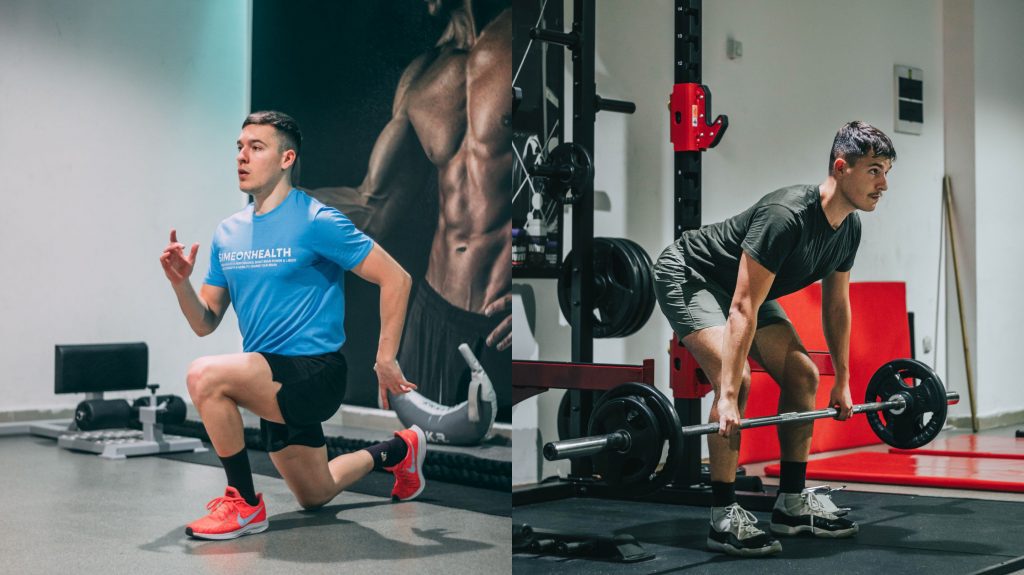
Lunge
The lunge is usually present as a single-leg exercise, but I’d rather look at it as single-sided. Lunges involve both legs, of whom one provides more support while the other contacts. Any unilateral movement requires around 50% less weight, so do not put the same amount of weight that you would have on the squat.
The force produced in the lunge is split onto both knees forward and backward, but the lever is different. We have our feet further apart, which makes it harder for us to lift the same amount of weight, as in a squat.
The lunge is usually a combined movement between the squat and hinge since it usually involves elements of both movements. There are different variations of the lunge, depending on back activation, feet positioning, hip and knee angles, and so on.
A great way to check optimal lunge form is to do the three-point stick when lunging and make sure you keep a neutral spine.
An optimal form in the basic lunge would require
- Neutral Spine & Straight Head
- The front foot is on the ground, touching fully
- The back foot can be on its toes or lifted (on the bench, Bulgarian)
- Arms usually extended down
- The knee points forward and not diagonally, laterally
- The knee can go over the ankle, but not too far
Some variations are single-leg deadlift, Bulgarian split squat, clock lunge, reverse lunge, lateral lunge, kickstand dumbbell deadlift, curtsy lunge, lunge pulse, and dumbbell reverse lunge.
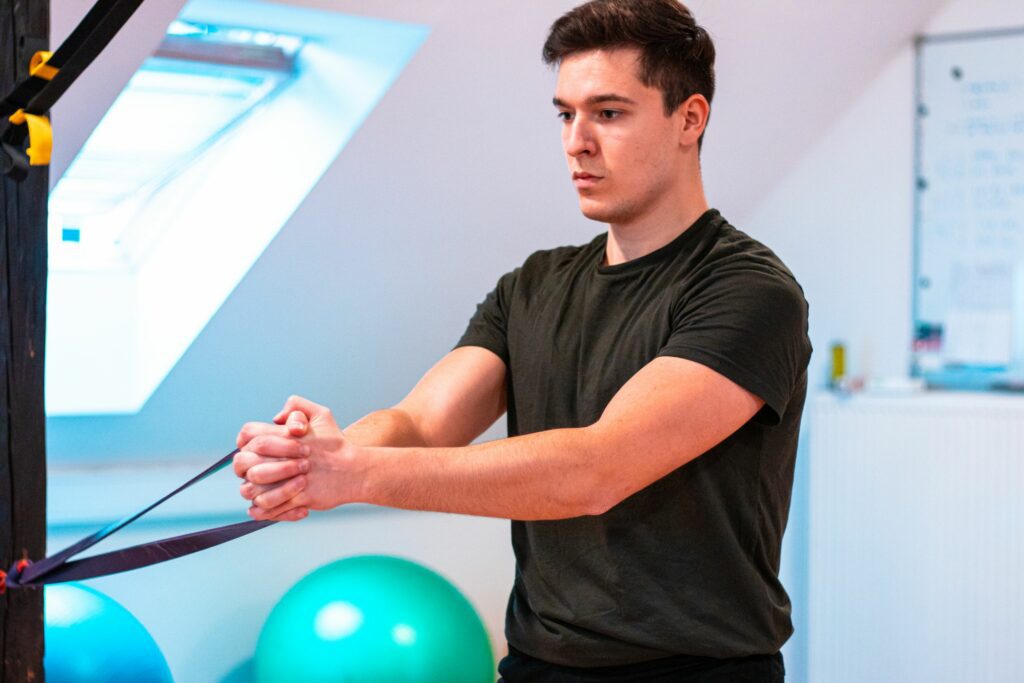
Twist
Twisting motion happens daily. Anytime we try to see something on the side, we twist our neck and torso.
Obliques are the most important core muscles responsible for this motion. Whenever we twist to the right, we turn our ribs to the right, and we activate both left and right oblique muscles, but the left is eccentrically while the right is concentrically contracted.
Internal obliques assist in creating intraabdominal pressure, which is crucial for stabilizing and preventing spine injury, especially during compound weightlifting.
This twisting motion should be trained with lighter weights, under the supervision of a professional. Someone who is just starting out should stay away from twists until he completely understands them because higher loads in twisted positions can cause lower back injury and other problems.
The best way to start out is to do an anti-rotation exercise, more static in nature where you put a resistance band on the side that is pulling you toward one side, while you are holding it in front of you, not allowing it to move you (isometric contraction).
Exercises that involve twisting can include rotation or anti-rotation and can be static or dynamic in nature. Some of these include Russian twists, medicine ball throws, criss-cross, hip twists in plank, side plank, bear crunch, lateral cable chop, Hanging lateral leg raises, and many more.
conclusion
Incorporating functional movement patterns in your workout is a great way to improve functional strength, movement fluidity, and mobility. One of the most important practices is to increase intraabdominal pressure, keep a neutral spine, and do controlled eccentric movements. The main 7 primal movement patterns are: squat, hinge, gait, push, pull, twist and lunge.

